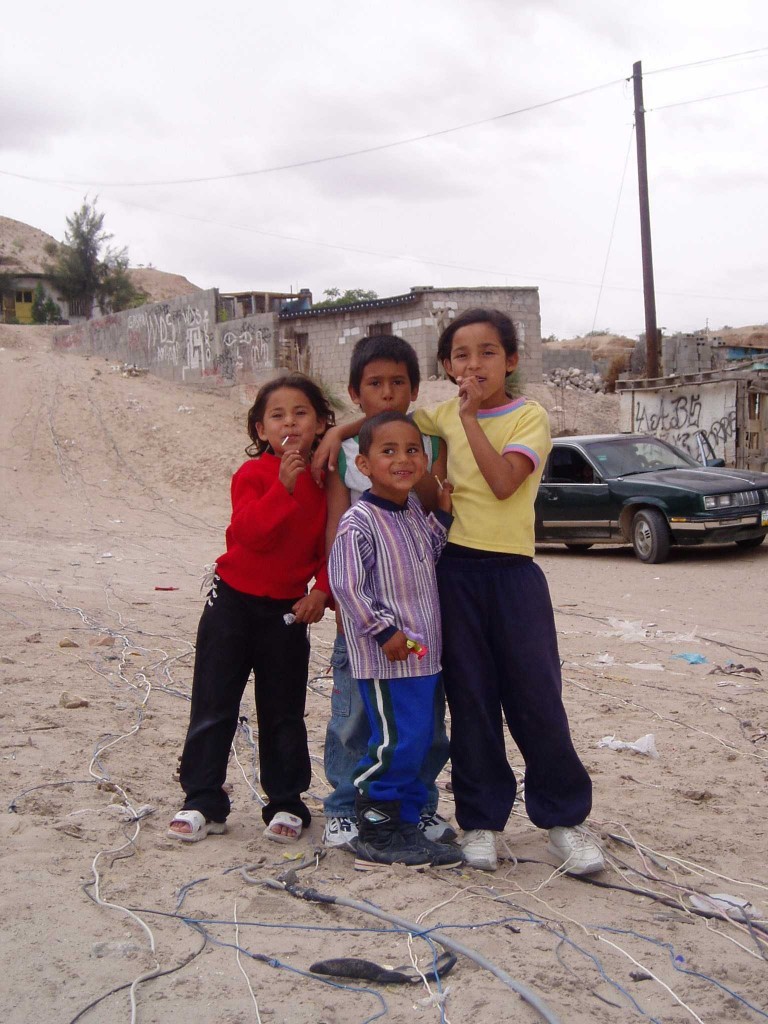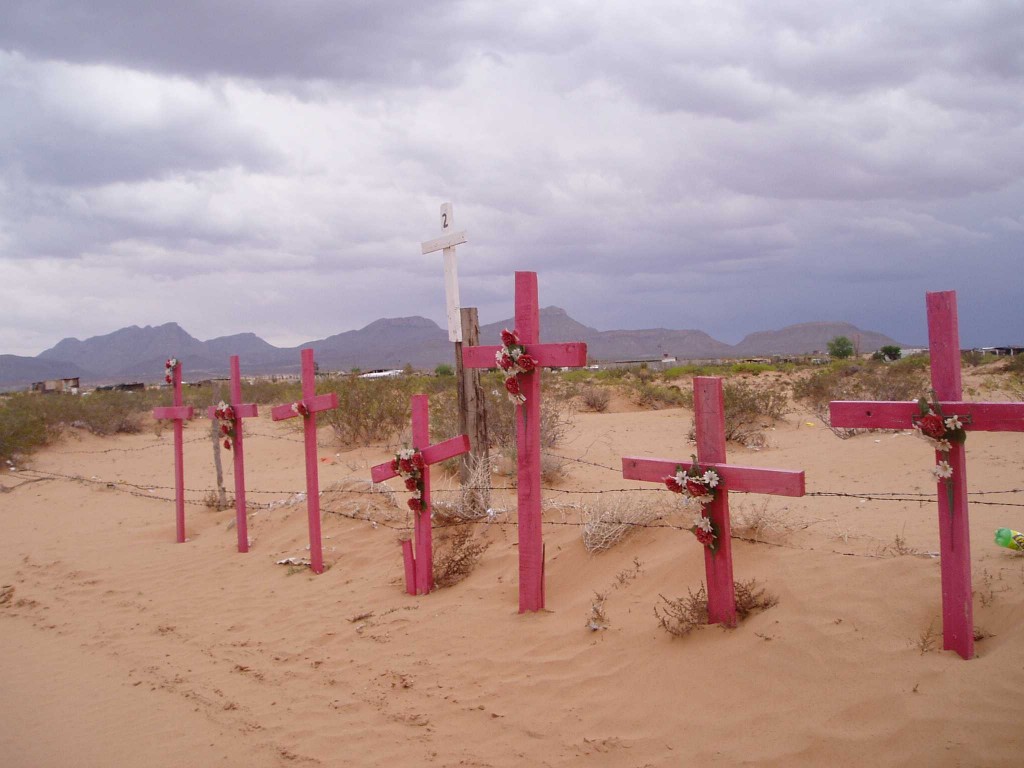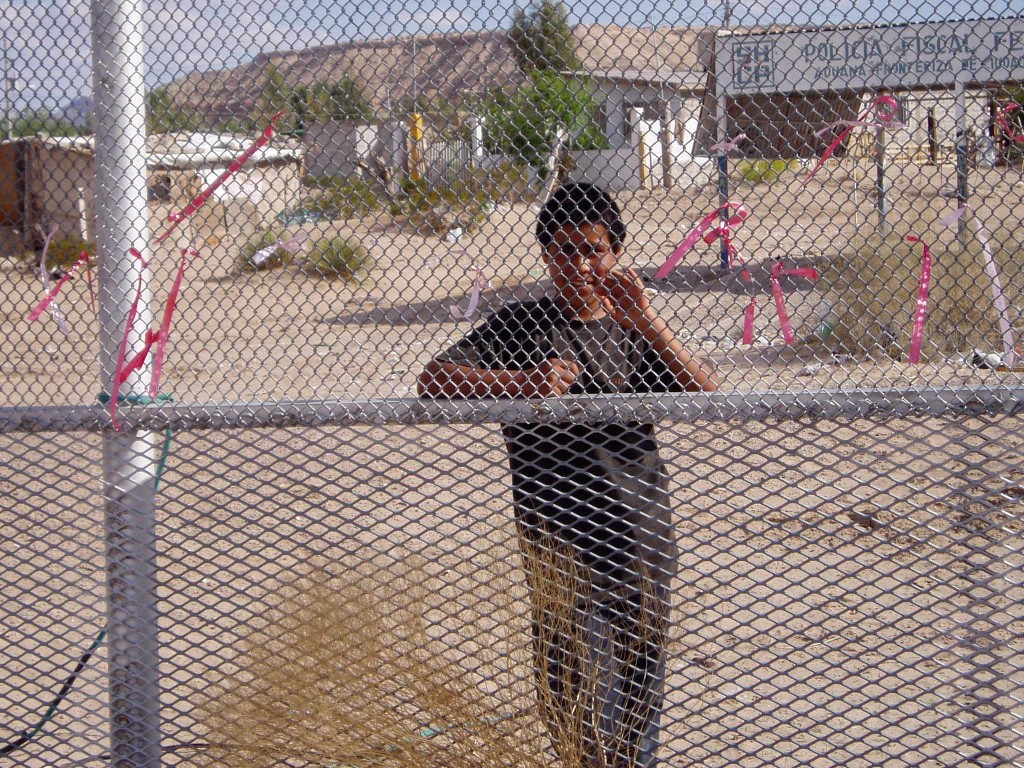
Dublin and Paris are nice. But they give us a very limited view of the world. Not the world as it really is. The fact is that two thirds of the world lives in unimaginable poverty. We have a moral obligation to educate ourselves about what this means for the lives of others. We are all connected.
In 2004 I made my first trip to Juarez, Mexico. The purpose of this trip was to enter into the economic reality of the people living in Juarez, Mexico. Juarez is a city of 1.5 million people just across the border from El Paso, Texas. If it wasn’t for the U.S./Mexico border, the communities of Juarez and El Paso, Texas would appear to be one single community, much like my hometown of the Twin Cities of Minneapolis and St. Paul. Often it is difficult to tell where Minneapolis ends and St. Paul begins. However, in Juarez, because of the border they are not one community. Economically they are worlds apart.
The juncture of El Paso and Juarez is marketed as “the only place in the Western Hemisphere where the first world and the third world meet.” Although I avoid the use of the term “third world” which implies “third rate” or somehow “less than” and likewise implies that the “first world” is better or more than. I prefer the terms “global south” or “two thirds world.”
Upon arriving in El Paso, we noticed the nice middle class homes, manicured lawns, parks, and schools. In many ways it is similar to towns elsewhere in the United States. But when we crossed the border into Juarez things changed. The streets became gravel and the houses became corrugated metal and cardboard. People lived without electricity and plumbing. There were very few middle class neighborhoods and wide, green boulevards existed only in the industrial and commercial areas. Over the few days we visited, we spoke with many of the people living in Juarez. We came to learn that they work at the 350 U.S. and European factories there, that produce many of the name brand products and appliances that we use in the United States. The migrant house we stayed in, for example, was across the street from the Proctor Silex factory. People work in these factories for $4 a day. You read it correctly – not $40 a day, but $4 a day!
You might wonder if the cost of living is less in Juarez. So did we. So we made a trip to the local grocery store. Surprisingly the prices were the same or even higher than the prices at home. So, on $4 a day one can barely afford one meal much less attempt to feed an entire family and pay for housing, clothing etc. In Juarez, both parents work as well as any children over 12 years of age. For a family of four, this means they are trying to feed themselves on about $12 a day and pay for all other living expenses. It is an impossible task. That is why they are living in cardboard boxes with no electricity. And this is why our coffee makers, TV’s and clothing are so inexpensive. Components are shipped from the U.S. to Juarez. The cheap labor of the Mexican workers assembles the products and they are transported back to the U.S. for sale in our stores.

The border between the U.S. and Mexico was supposed to be opened with the signing of NAFTA (North American Free Trade Agreement). Inherent in this agreement was the opening of the border to the free movement of people and goods. However, only Americans and their goods are moving freely across the border. The border is most definitely closed to Mexicans. Prior to the agreement Mexicans were able to move a little more freely between Mexico and the U.S. They often worked in El Paso during the day and returned to their homes and families at night. Now they cannot cross the border without risking being picked up or shot by the border patrol. Also, a 2,000-mile fence was installed just prior to NAFTA. I believe the factories in Juarez feared losing their cheap labor with the opening of the border and so pressured the Clinton administration to erect the fence. The border was further tightened in the Bush administration. We were informed that the U.S. spends around $2 billion each year to guard this border.
The fact is that Mexicans prefer to stay in Mexico. They do not want to move to the U.S. Like any of us they prefer to live in their own homeland. But they do need jobs that can support them and the jobs that pay better are in the U.S. Eliminating the border barriers would go a long way to raising wages in Mexico. With an open border, jobs in Juarez would need to pay more in order to compete with jobs paying minimum wage in El Paso. But corporations who own the factories in Juarez would prefer that the border remain closed and the wages remain immorally low and product prices remain cheaper than they truly should be.
Furthermore, this situation exists in factories around the world, for example in China and other Asian countries too. At bottom, this means we are living our lifestyles on the backs of other people. Someone mentioned that, nevertheless, it was generous for Americans to give up their paid vacations to visit Juarez. But this shows a lack of understanding of this entire economic situation. Companies can afford to provide us with “paid vacations” (ultimately paid for by whom?) and other benefits because the expenses for other items are so much less due to this cheap labor. Truly, everything we have (including paid vacations) is subsidized by this tragically cheap labor.
We spent our Easter Week in the colonias or neighborhoods of Juarez and talked with the people there. This was “mission in reverse.” We didn’t offer to do anything for them or build anything for them. How could we? It would have been arrogant for us to assume that we could possibly know what they might need. In truth, they are excellent builders and many worked in construction jobs here in the U.S. before the border was closed. Rather, we went to listen, and to hear their story. They wanted us to bring their story back and to share it with others here in the U.S. This situation (and others like it), can change only when many people in North America begin to understand this political and economic interdependence. This one situation illustrates the stark reality that everything from the clothes we wear to the many gadgets and appliances we use are very political. Our lifestyle choices and national trade policies have real consequences for others. We are crucifying others every day with our choices and policies.
What can you do? Educate yourself. Share what you learn with others. To learn more –
Click the video link below to see reality as it really is for many around the world, in order to support our North American lifestyle:
“All I need” video comparing lifestyles of typical U.S. kid and Global South kids.
World poverty ‘more widespread’ **
In this article the World Bank says there are more poor people in the world than previously thought, with one in four in poverty.
What does it mean to earn a living wage ? Notice how little is included in this calculation.
Learn more about Poverty in America then
read journalist Mark Kramer’s fascinating journey to 7 of the world’s urban slums in his book, Dispossessed. If your library doesn’t have this book, change their selection. Ask that they order it for you.

We need FAIR TRADE, not free trade.
You may also like Ugly Truth About School Funding, Poverty is a Luxury We CanNOT Afford and Where Do Our Clothes Come From?
[…] may also like From Dublin to Juarez, Antique Bookstores in Paris and Pura Vida! This entry was posted in Books and Films, Health and […]